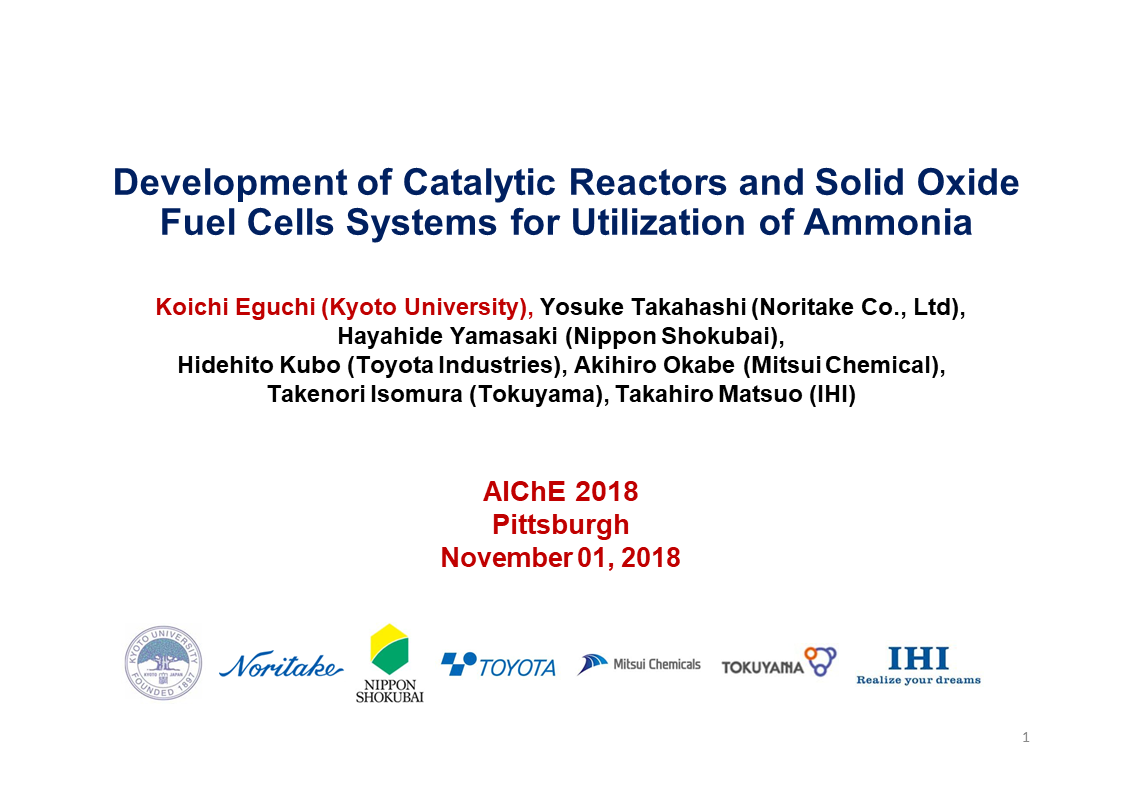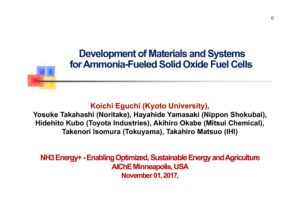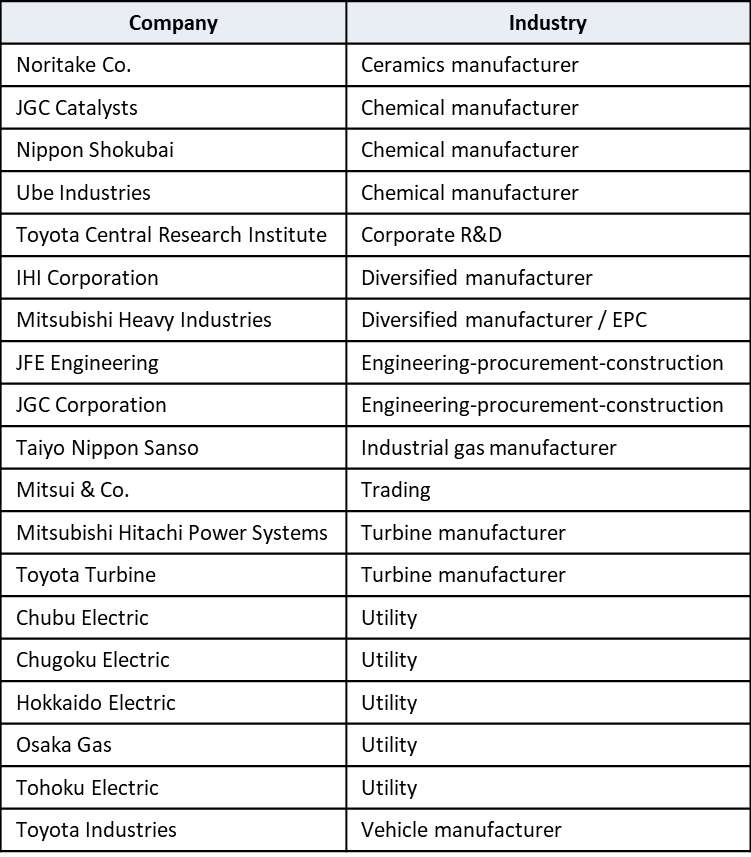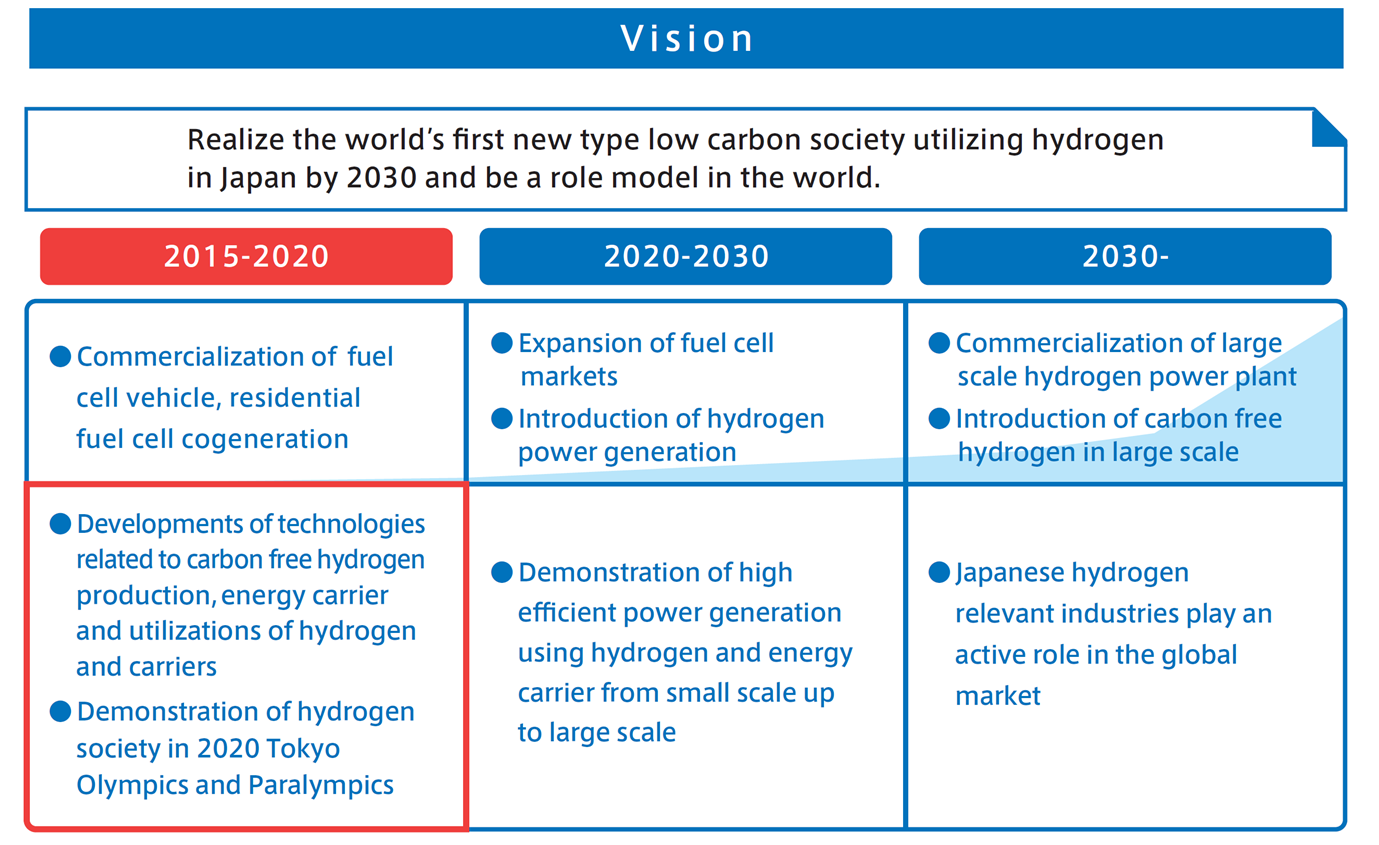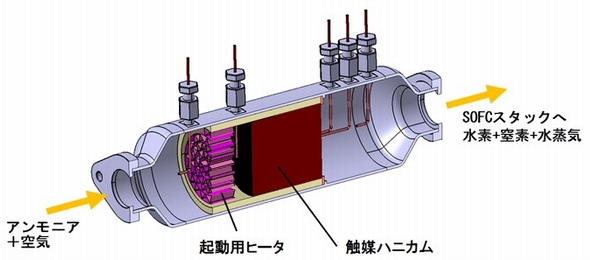Mitsui & Co., Mitsui Chemicals, IHI Corporation and the Kansai Electric Power Company will explore the establishment of a hydrogen & ammonia supply chain based in Osaka. Ammonia fuel will be used to decarbonise electricity generation, and cracked to provide a feedstock for other industrial processes like steel-making. In South Korea, a similar partnership is evolving between LOTTE and Air Liquide. You can learn more about the emerging nexus between ammonia cracking and steel-making at our upcoming annual conference in Atlanta, USA.
Content Related to Mitsui Chemicals
Article
Green Ammonia Consortium: A Force for Ammonia Energy
Stephen H. Crolius January 09, 2020
Japan’s Green Ammonia Consortium, an industry body dedicated to building “a value chain from supply to use of CO2-free ammonia,” launched its Web site on December 5. The site features plenty of interesting content, but most significant may be the roster of members. Eighty seven companies, public organizations, and individuals are listed. Taken together they represent a significant force for ammonia energy implementation in Japan and beyond.
Presentation
Development of Catalytic Reactors and Solid Oxide Fuel Cells Systems for Utilization of Ammonia
Koichi EguchiYosuke TakahashiTakahiro MatsuoHayahide YamasakiHidehito KuboAkihiro OkabeTakenori Isomura
Hydrogen is the primary fuel source for fuel cells. However, the low volume density and difficulty in storage and transportation are major obstacles for the practical utilization. Among various hydrogen carriers, ammonia is one of the promising candidates because of its high hydrogen density and boiling point and ease in liquefaction and transportation. The reaction temperature of ammonia cracking to nitrogen and hydrogen, being about 600°C or higher, is close to the operating temperature of solid oxide fuel cells (SOFCs). The integration of these two devices is beneficial in terms of heat and energy managements and will lead to the…
Presentation
Development of Materials and Systems for Ammonia-Fueled Solid Oxide Fuel Cells
Koichi EguchiYosuke TakahashiHayahide YamasakiHidehito KuboAkihiro OkabeTakenori IsomuraTakahiro Matsuo
Hydrogen is the primary fuel source for fuel cells. However, the low volume density and difficulty in storage and transportation are major obstacles for the practical utilization. On-site generation of hydrogen from its carrier is an effective method for the fuel supply. Among various hydrogen carriers, ammonia is one of the promising candidates. Ammonia has high hydrogen density. The boiling point of ammonia is relatively high, leading to the ease in liquefaction and transportation. Hydrogen can be produced from ammonia with a mildly endothermic process. The reaction temperature of ammonia cracking is about 600˚C or higher which is close to…
Article
Green Ammonia Consortium: Bright Prospects in Japan for Ammonia as an Energy Carrier
Stephen H. Crolius October 05, 2017
In the last 12 months ... In July 2017, 19 companies and three research institutions came together to form the Green Ammonia Consortium. Before this development, it was unclear whether ammonia would find a significant role in Japan’s hydrogen economy. In the wake of this announcement, however, ammonia seems to have claimed the leading position in the race among potential energy carriers.
Article
Major Development for Ammonia Energy in Japan
Stephen H. Crolius August 10, 2017
On July 25, the Japan Science and Technology Agency (JST) announced that a collection of companies and research institutions had come together to form a Green Ammonia Consortium. The 22-member group will take over responsibility for the ammonia aspect of the Cross-Ministerial Strategic Innovation Program (SIP) Energy Carriers agenda when the SIP is discontinued at the end of fiscal 2018. A JST press release states that the Consortium intends to develop a strategy for “forming [an] ammonia value chain,” promote demonstration projects that can further commercialization, and enable “Japanese industry to lead the world market.”
Article
Japan-Brunei MCH Energy Carrier Demonstration
Stephen H. Crolius August 02, 2017
Chiyoda Corporation, the multinational chemical engineering firm that is arguably the leading proponent of the methyl cyclohexane (MCH) method of hydrogen transport, will start work this month on a project to demonstrate MCH technology in a real-world context. As reported in a July 27 company press release, the project will involve the transportation of hydrogen from Brunei to Japan in what the company states is "the world's first global hydrogen supply chain demonstration project" -- an assertion that many ammonia energy proponents will no doubt find preposterous.
Article
Ammonia-Fueled Solid Oxide Fuel Cell Advance at Kyoto University
Stephen H. Crolius July 20, 2017
Earlier this month the Eguchi Laboratory at Kyoto University announced advances in ammonia-fueled solid oxide fuel cell technology. The lab was able to produce a functioning fuel cell with a power output of one kilowatt. The device attained “direct current power generation efficiency” in excess of 50% and reached 1,000 hours of continuous operation.
Presentation
Research and Development of Ammonia-fueled SOFC Systems
Koichi EguchiAtthapon SrifaTakeou OkanishiHiroki MuroyamaToshiaki MatsuiMasashi KishimotoMotohiro SaitoHiroshi IwaiHideo YoshidaMasaki SaitoTakeshi KoideHiroyuki IwaiShinsuke SuzukiYosuke TakahashiToshitaka HoriuchiHayahide YamasakiShohei MatsumotoShuji YumotoHidehito KuboJun KawaharaAkihiro OkabeYuki KikkawaTakenori Isomura
Ammonia is a promising hydrogen carrier because of its high hydrogen density, low production cost, and ease in liquefaction and transport. Ammonia decomposes into nitrogen and hydrogen through a mildly endothermic process. The ammonia decomposition temperature is close to the operating conditions of solid oxide fuel cells (SOFCs). Therefore, the integration of these two devices is beneficial in terms of efficient heat and energy managements and will lead to the development of simplified generation systems. We have investigated three types of ammonia-fueled SOFC systems. In one system, ammonia is directly supplied to the anode chamber. Ammonia decomposes into nitrogen and…
Presentation
Current progress in development of NH3-fueled solid-state fuel cell systems
Takeou OkanishiKaname OkuraJun YangHiroki MuroyamaToshiaki MatsuiMasashi KishimotoMotohiro SaitoHiroshi IwaiHideo YoshidaKoichi EguchiHiroyuki IwaiK. InaokaShinsuke SuzukiYosuke TakahashiToshitaka HoriuchiHayahide YamasakiHideyuki MatsumotoHidehito KuboJun KawaharaAkihiro OkabeYuki KikkawaT. NegishiS. Watanabe
Current progress in development of NH3-fueled solid-state fuel cell systems T. Okanishi*, K. Okura, J. Yang, H. Muroyama, T. Matsui, M. Kishimoto, M. Saito, H. Iwai, H. Yoshida, K. Eguchi, Kyoto University; H. Iwai, K. Inaoka, S. Suzuki, Y. Takahashi, Noritake; T. Horiuchi, H. Yamasaki, Nippon Shokubai; S. Matsumoto, H. Kubo, Toyota Industries; J. Kawahara, A. Okabe, Mitsui Chemical; Y. Kikkawa, T. Negishi, S. Watanabe, Tokuyama

